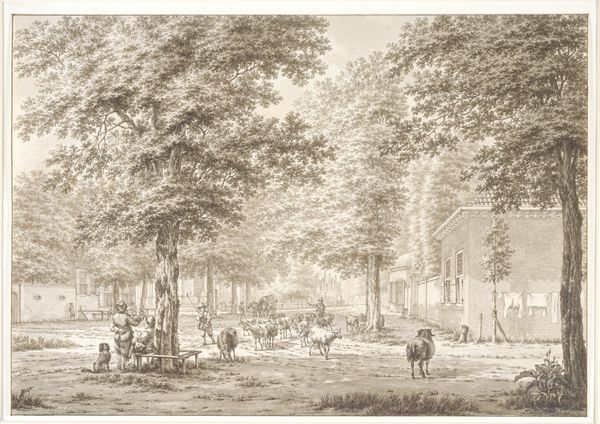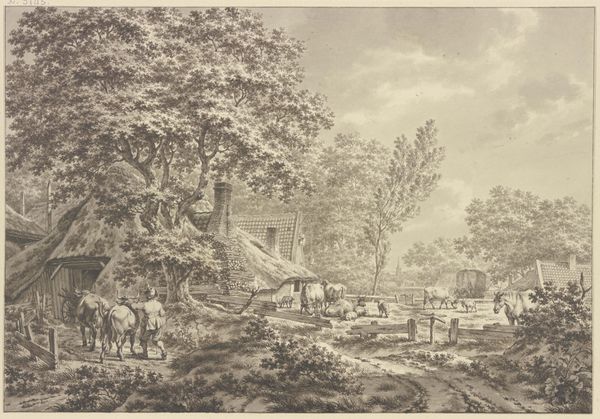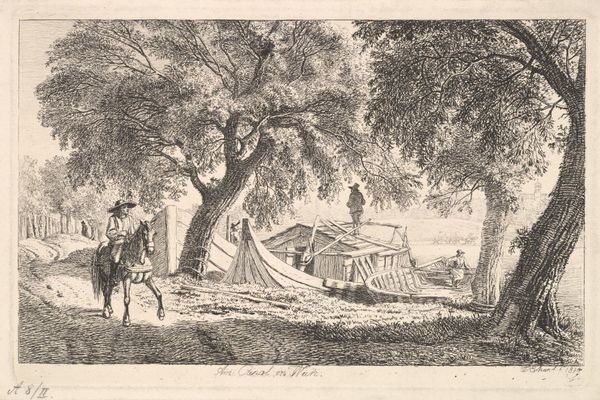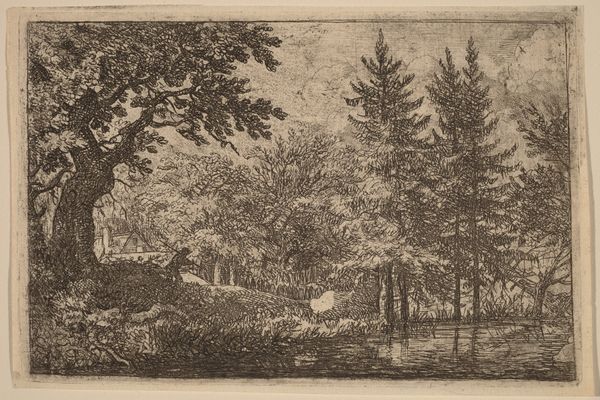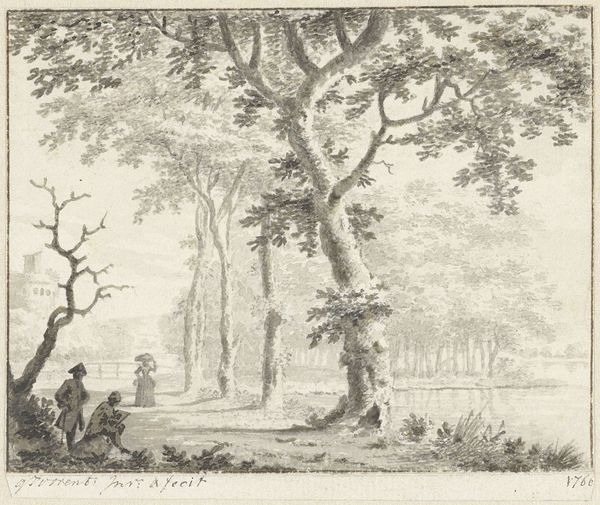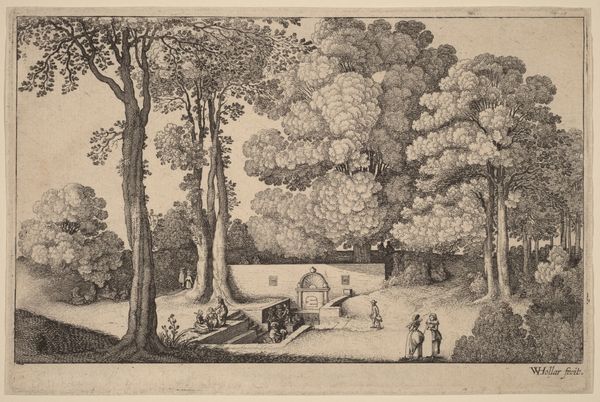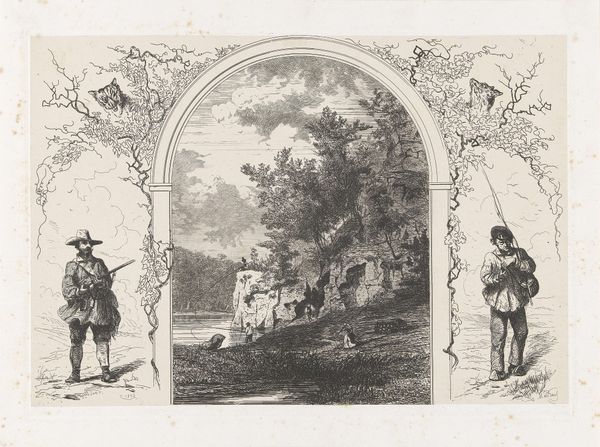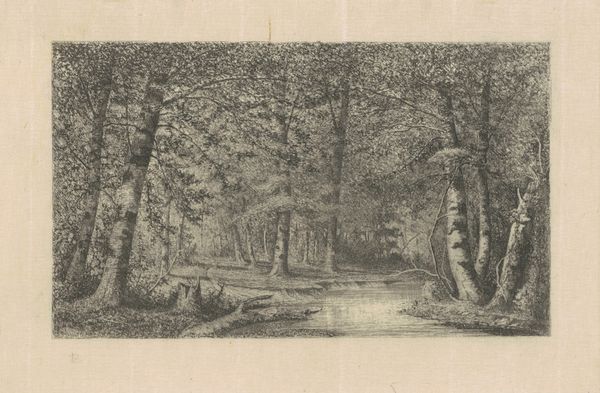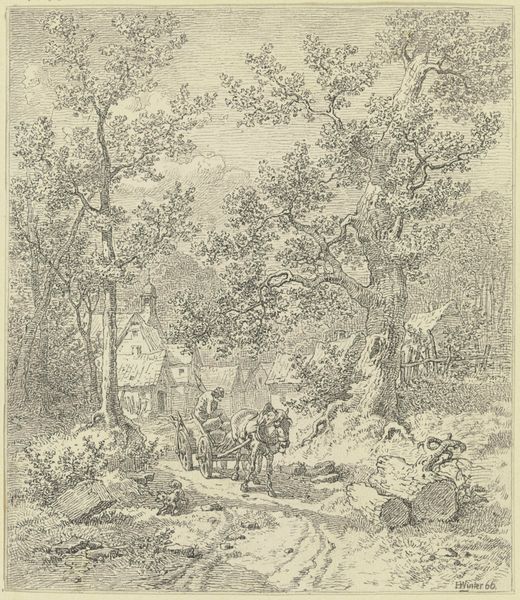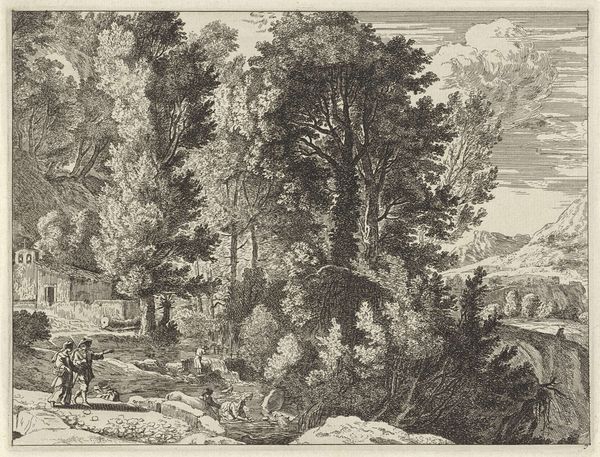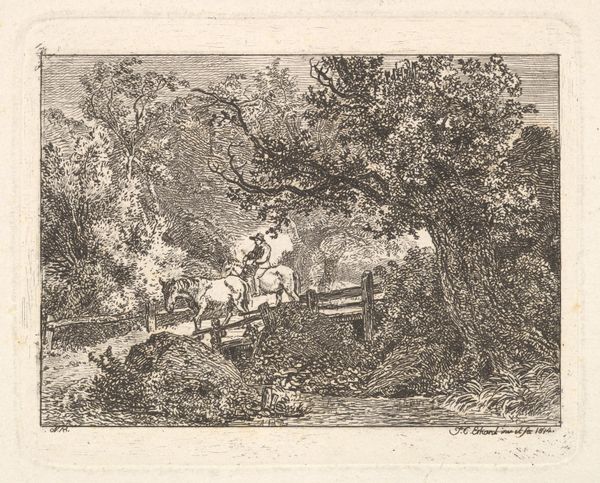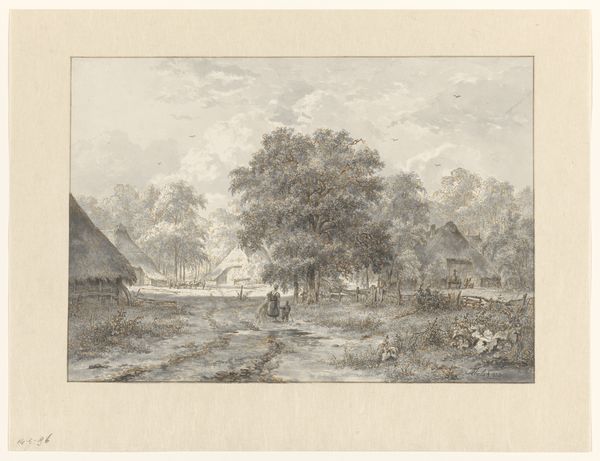
Landscape, from a series of six landscapes dedicated to Madame La Marquise de Pompadour 1720 - 1762
0:00
0:00
drawing, print, etching, engraving
#
drawing
#
baroque
# print
#
etching
#
landscape
#
etching
#
engraving
Dimensions: Sheet (trimmed): 4 3/16 × 5 9/16 in. (10.7 × 14.2 cm)
Copyright: Public Domain
Curator: This etching, "Landscape," is part of a series of six landscapes dedicated to Madame la Marquise de Pompadour, crafted by Quentin Pierre Chedel between 1720 and 1762. Note the intricacy. What's your initial response to this landscape, Editor? Editor: Chaos! At first glance, it’s this mad scramble across the bridge that snags your eye. Is it a hunting party gone sideways, or some kind of aristocratic disaster movie playing out? Curator: A "disaster movie," you say? Interesting. Formally, we see how Chedel uses linear precision to render texture. Consider how he models spatial recession, directing our vision toward the lighter planes in the distance, and uses a system of hatches to articulate dark, looming masses in the foreground and back. Editor: All those meticulous lines! You can almost feel the scratch of the etching needle. But the light, or rather the play of light and shadow, is really doing the work here. It’s creating drama. Is it supposed to be pretty, or are we supposed to be, you know, on edge? Curator: I think the visual construction leads us away from simplistic decorative aims toward a meditation on structured nature. Note, also, how he varies the density and orientation of these engraved marks. That controls the perceived luminosity and depth. Editor: Structured, maybe. Still looks like that poor horse is about to take a dive. And look at the people lounging in the foreground, seemingly oblivious to the drama unfolding above them. Like, “Oh, another hunting mishap. Pass the wine, darling." Curator: The groups of figures distributed within the design are significant. In pictorial construction, each carefully positioned mark builds the whole narrative; the groups respond to their specific placement, animating the whole. Editor: The composition feels almost theatrical, framed by these dark, arching trees. It's like peeking into another world. So tell me, who was Madame de Pompadour, and why landscapes? Curator: Jeanne Antoinette Poisson, Marquise de Pompadour, was the influential mistress of King Louis XV. Her patronage significantly shaped French arts and culture, and landscape prints such as these catered to a taste for the picturesque and the idyllic among the aristocracy, as extensions of formal Baroque aesthetics. Editor: So, a backdrop for the beautiful people…or at least beautiful with all the best landscape design? It makes sense that even then, beauty and order mattered. Curator: Precisely, and how! The controlled lines speak volumes about artistic mastery and that very societal order. Editor: Well, next time I want to see controlled lines, I am just going to picture this again—those wild lines of the figures just making a dash. I never thought chaos and fine art went so well together. Curator: Perhaps what we have been studying is more a negotiation between chaos and line? Thank you for sharing your stimulating perspectives.
Comments
No comments
Be the first to comment and join the conversation on the ultimate creative platform.
